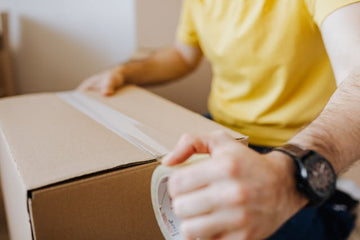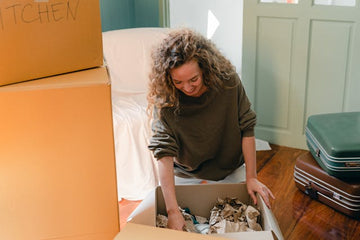Shipping boxes are an essential part of modern commerce, ensuring products reach customers in perfect condition. Properly wrapping and securing these boxes not only protects the contents but also reflects your brand's professionalism and attention to detail. Whether you're a small business owner, an online seller, or someone shipping gifts to loved ones, mastering the art of wrapping shipping boxes is crucial. Here's a step-by-step guide to help you wrap your shipping boxes like a pro.
Step 1: Gather Your Materials
Before you begin, make sure you have all the necessary materials. Here's a checklist:
- Shipping box: Choose a box that's appropriately sized for your item.
- Packing tape: High-quality, durable packing tape.
- Bubble wrap or packing peanuts: For cushioning delicate items.
- Scissors or a box cutter: To cut tape and other materials.
- Shipping labels: Pre-printed or ready to fill out.
- Marker or pen: For labeling the box.
- Measuring tape: To ensure your box meets size regulations for shipping.
Step 2: Choose the Right Box
Selecting the right box is the first step. The box should be slightly larger than the item you're shipping to allow for cushioning material. Ensure the box is sturdy and free from any damage or weak spots.
Tips:
- New Boxes: Always use new boxes for valuable or fragile items. Used boxes can weaken over time.
- Double Boxing: For extra protection, consider double boxing, especially for fragile items. Place the item in a smaller box, cushion it well, and then place this box inside a larger one.
Step 3: Prepare the Box
Before placing the item inside, reinforce the box’s bottom with packing tape. Seal any seams and corners to prevent the box from breaking open during transit.
Steps:
- Tape the Bottom: Use the H-taping method by applying tape along the center seam and additional strips along the edges.
- Inspect the Box: Ensure there are no openings or weak spots.
Step 4: Wrap and Cushion Your Item
Proper cushioning is essential to protect the contents of your package. Use bubble wrap, packing peanuts, or other cushioning materials to secure the item.
Steps:
- Wrap the Item: Use bubble wrap to cover the item completely. Secure the bubble wrap with tape.
- Place in Box: Put the wrapped item in the box. Add packing peanuts or crumpled paper to fill any empty spaces. The item should not move when you shake the box.
Tips:
- Fragile Items: For fragile items, use multiple layers of bubble wrap and consider placing a "Fragile" sticker on the box.
- Heavy Items: For heavy items, use reinforced boxes and ensure the bottom is well-taped and cushioned.
Step 5: Seal the Box
Once the item is securely cushioned, close the box and seal it with packing tape.
Steps:
- Close the Flaps: Fold down the flaps and ensure they close flat without bulging.
- Tape the Seams: Use the H-taping method again for the top of the box. Apply tape along the center seam and additional strips along the edges.
Step 6: Label the Box
Proper labeling is critical for ensuring your package reaches its destination.
Steps:
- Shipping Label: Attach the shipping label to the top of the box. Ensure it’s clearly visible and not placed over any seams or edges.
- Return Address: Include a return address in case the package cannot be delivered.
- Special Instructions: If applicable, add any special handling instructions, such as "Fragile," "This Side Up," or "Handle with Care."
Tips:
- Clear Labels: Use clear tape to cover the shipping label to protect it from moisture or damage.
- Duplicate Labels: Place a duplicate label inside the box in case the external one gets damaged.
Step 7: Double-Check and Send
Before sending off your package, double-check everything:
- Is the box securely taped?
- Is the item properly cushioned?
- Is the shipping label clearly visible and correctly filled out?
Once you’ve ensured everything is in order, your package is ready to be shipped.
Tips:
- Weight and Size: Verify the weight and dimensions of your box to ensure it meets the carrier’s requirements.
- Shipping Options: Choose the right shipping service based on your needs (speed, cost, tracking, etc.).
Conclusion
Wrapping shipping boxes correctly is a vital skill that ensures your items arrive safely and in good condition. By following these steps, you can enhance the unboxing experience for your customers or recipients, reflecting your care and professionalism. With attention to detail and the right materials, your packages will withstand the rigors of transit and arrive at their destination just as you intended.





